Career Highlights
- Scaled a distributed enterprise platform for a Fortune Global 100 company—managing millions of financial transactions weekly and integrating directly with SAP.
- Architected a live broadcast telemetry system used in international sports events, overcoming real-time sync and visualization challenges in environments never designed for racing.
- Delivered enterprise tools for nationwide hospital systems, combining mobile UX, dietary compliance, OCR, and automated dispatch—boosting staff efficiency and care quality.
- Developed forecasting and planning tools for cross-site development teams—improving visibility and delivery accuracy on client- and customer-facing milestones.
Project Timeline
Now
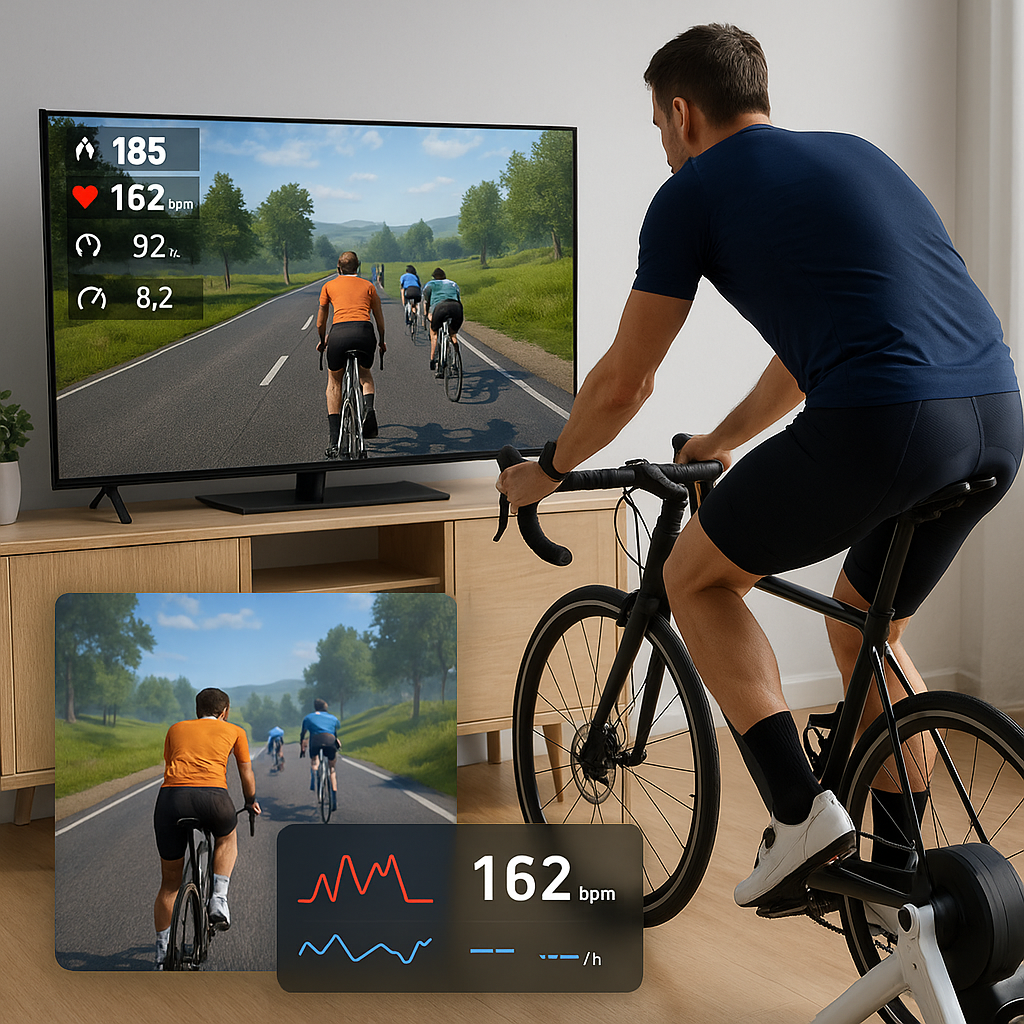
Distributed Fitness Simulation Platform with Real-Time Telemetry and IoT Integration
Architected and contributed to a large-scale, multiplayer cycling and fitness game featuring realistic physics for drafting, wind resistance, elevation, and cornering. Led the design and development of core server-side components—including the simulation server, session coordination server, and web server—deployed as Dockerized microservices in a distributed AWS environment with CI/CD automation. The session coordination server managed user session state, instance coordination, and communication with the database (MongoDB), while telemetry from clients was sent directly to the simulation server, which performed real-time physics calculations, synchronized users in the same instance, and stored race results and fitness metrics in FIT format. Fitness data could be automatically uploaded to platforms like Strava via OAuth-secured workflows. On the Unity-based client, contributed to physics accuracy, terrain optimization, and user configuration flows. Integrated with smart bike trainers and fitness sensors using BLE and ANT+, capturing real-time telemetry from heart rate monitors, cadence sensors, and power meters. Applied IoT principles, modular architecture, and Inversion of Control (IoC) for extensible, maintainable system design.
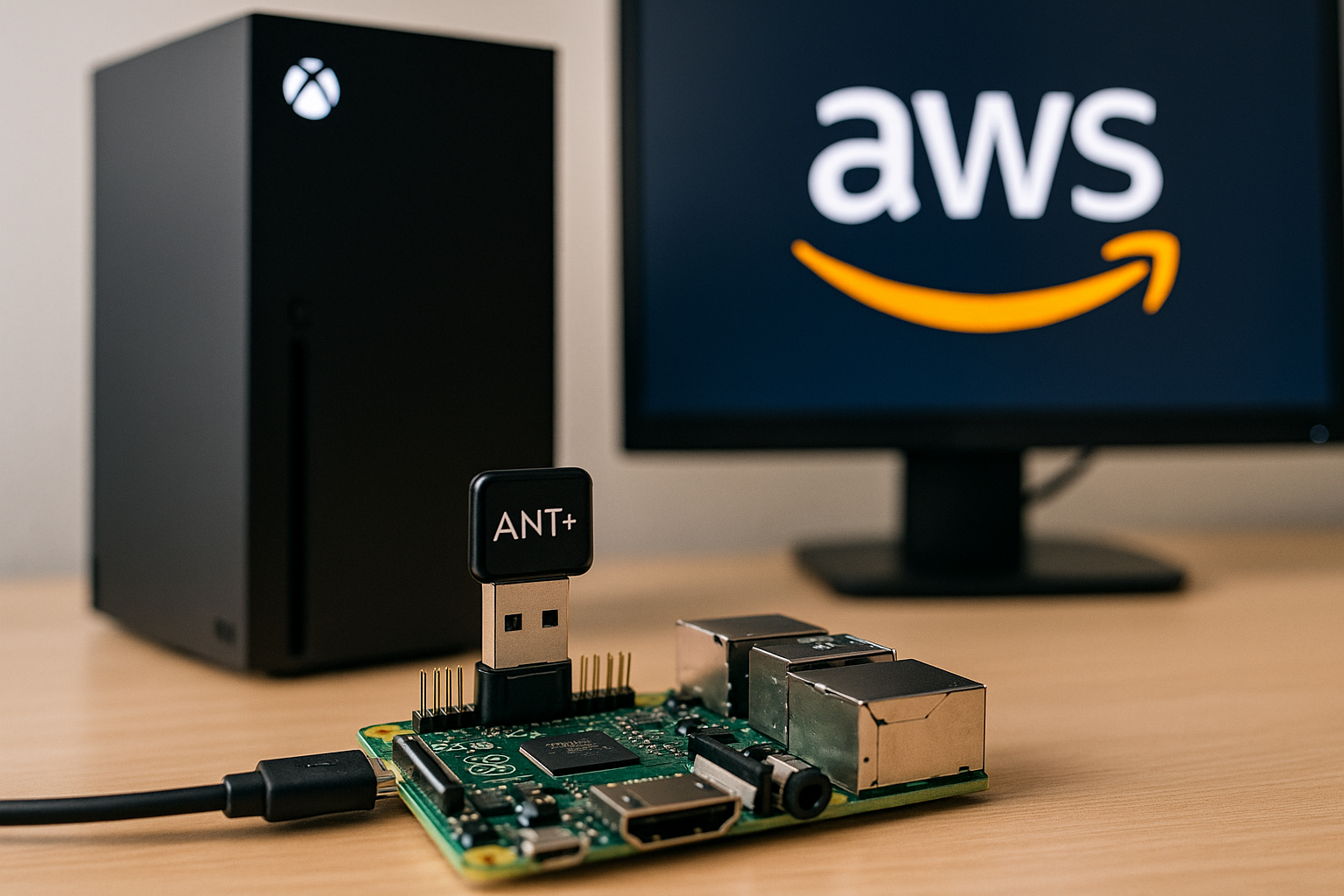
Telemetry Relay Bridge for Console-Based Fitness Simulation
Engineered a telemetry relay solution to enable console-based gameplay for a cross-platform fitness simulation system. Since Xbox could not directly ingest real-time telemetry from fitness sensors, developed a Raspberry Pi-based bridge using an ANT+ USB stick to connect with smart trainers, heart rate monitors, cadence sensors, and speed sensors. The Raspberry Pi dynamically queried AWS load balancers to locate the appropriate simulation server instance for the player and relayed telemetry data as if it originated from a standard Windows client. Implemented robust connection management with retries, failure detection, and recovery logic for both sensor pairing and server communication—allowing console players to seamlessly integrate into live multiplayer sessions.
2010s
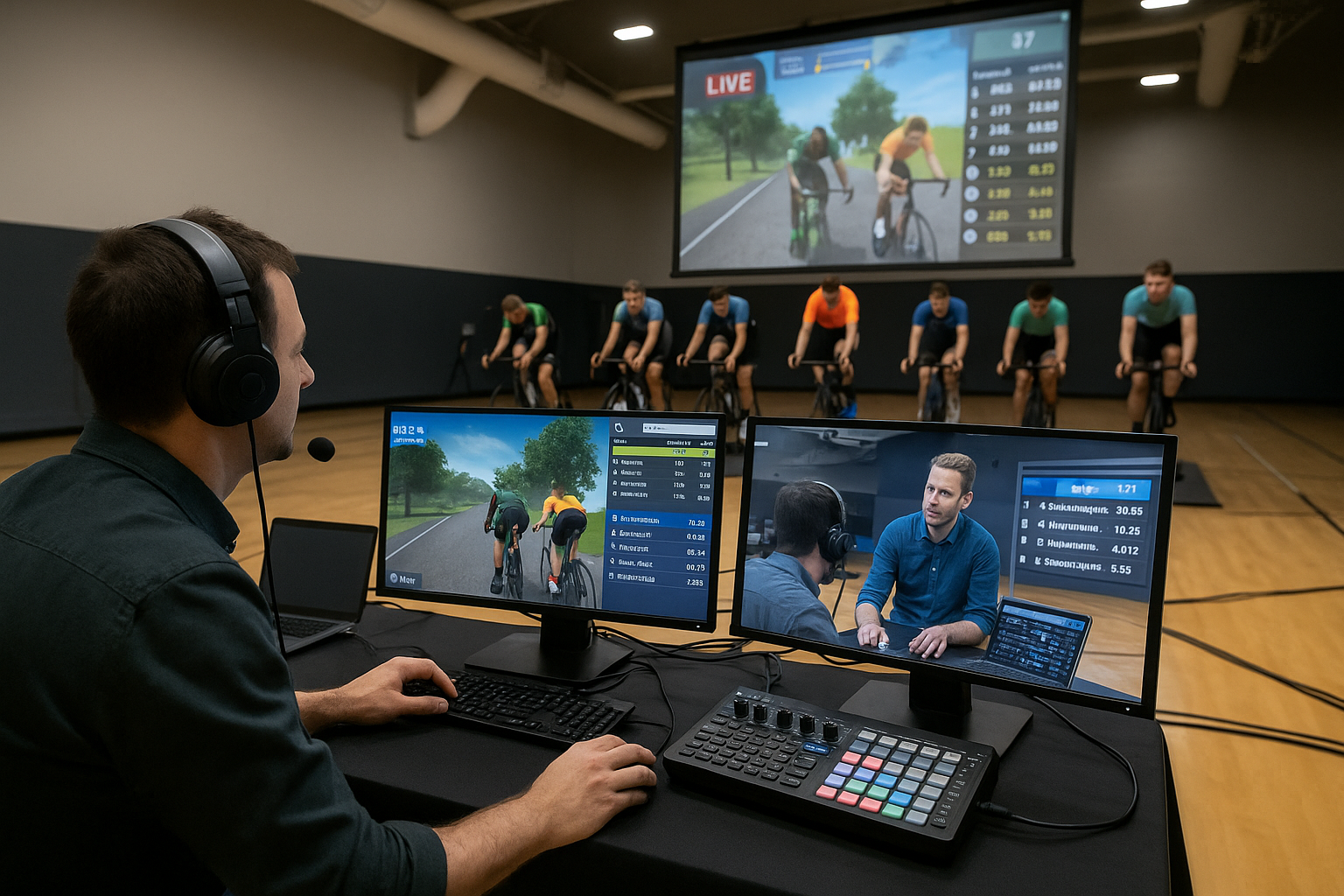
Live Broadcast Engineering and Real-Time Telemetry System for Competitive Indoor Cycling Events
Served as the lead engineer for the live broadcast of international competitive indoor cycling events using smart trainer technology. Oversaw end-to-end site preparation, technical setup, and real-time resolution of connectivity issues to ensure uninterrupted broadcasts. Architected and implemented a custom telemetry and rider-positioning system on top of a platform not originally designed for live race tracking or finish line detection. Developed innovative mid-race scoring features, including dynamic interim sprint lines that awarded points to riders in order of passage, with predictive modeling of maximum achievable points per athlete. The system supported both men's and women's divisions with equal prize distribution and was successfully deployed across multiple global CVR World Cup events.
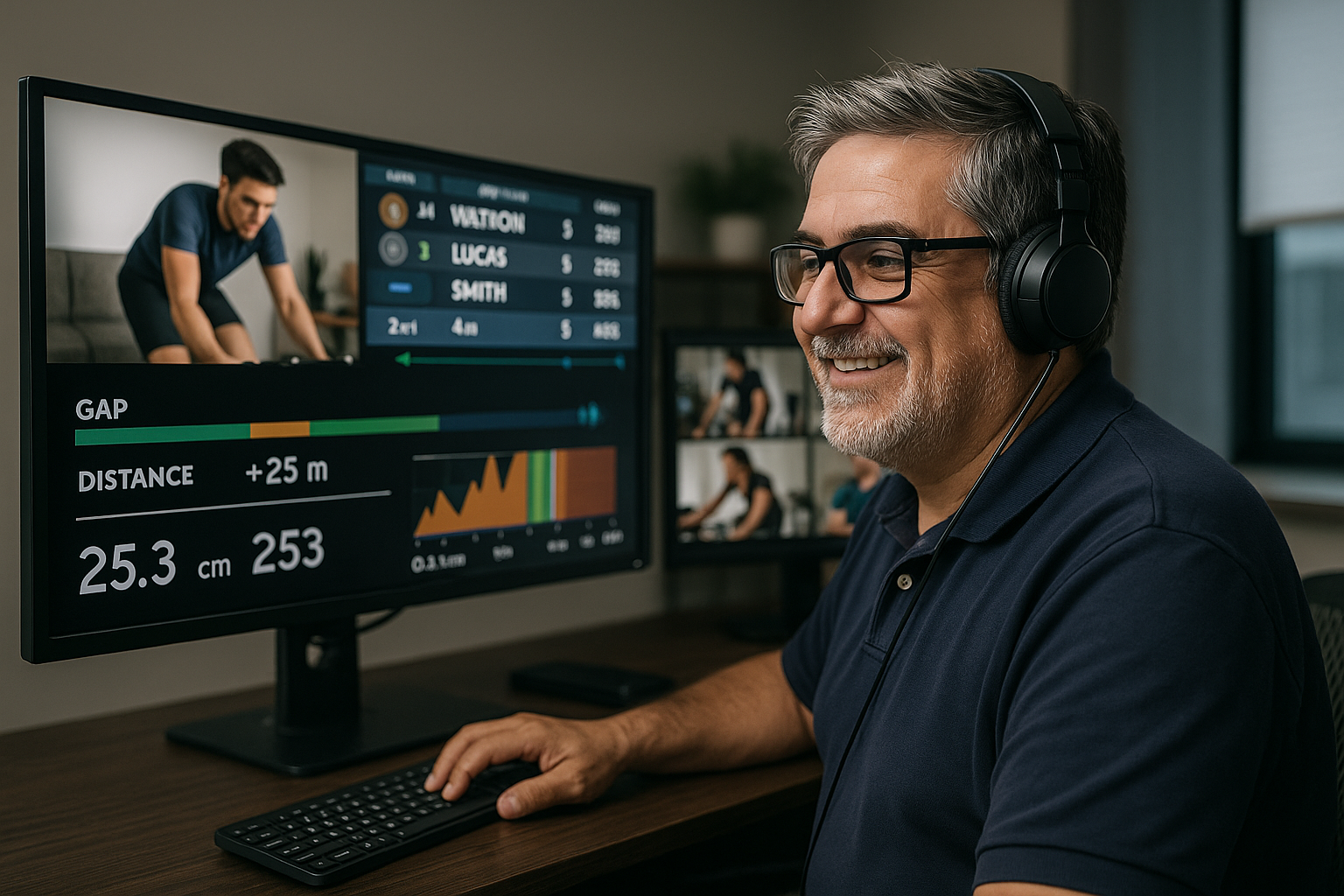
Engineering and Telemetry Platform for Remote Competitive Cycling League Broadcasts
Served as the lead engineer for a professional virtual cycling league in which competitors raced remotely from their homes using smart trainers and a third-party simulation platform not originally designed for structured racing or broadcast telemetry. Developed and maintained the custom telemetry infrastructure that powered on-screen visuals during the live stream, including real-time rider positioning, time gaps, and scoring overlays. Addressed the unique technical challenges of non-linear in-game positioning and a lack of physical distance units, engineering a system to reliably calculate and display standings, race progression, and sprint results. While participants managed their own OBS feeds, I ensured the telemetry fed into the central broadcast controller for accurate and engaging coverage.
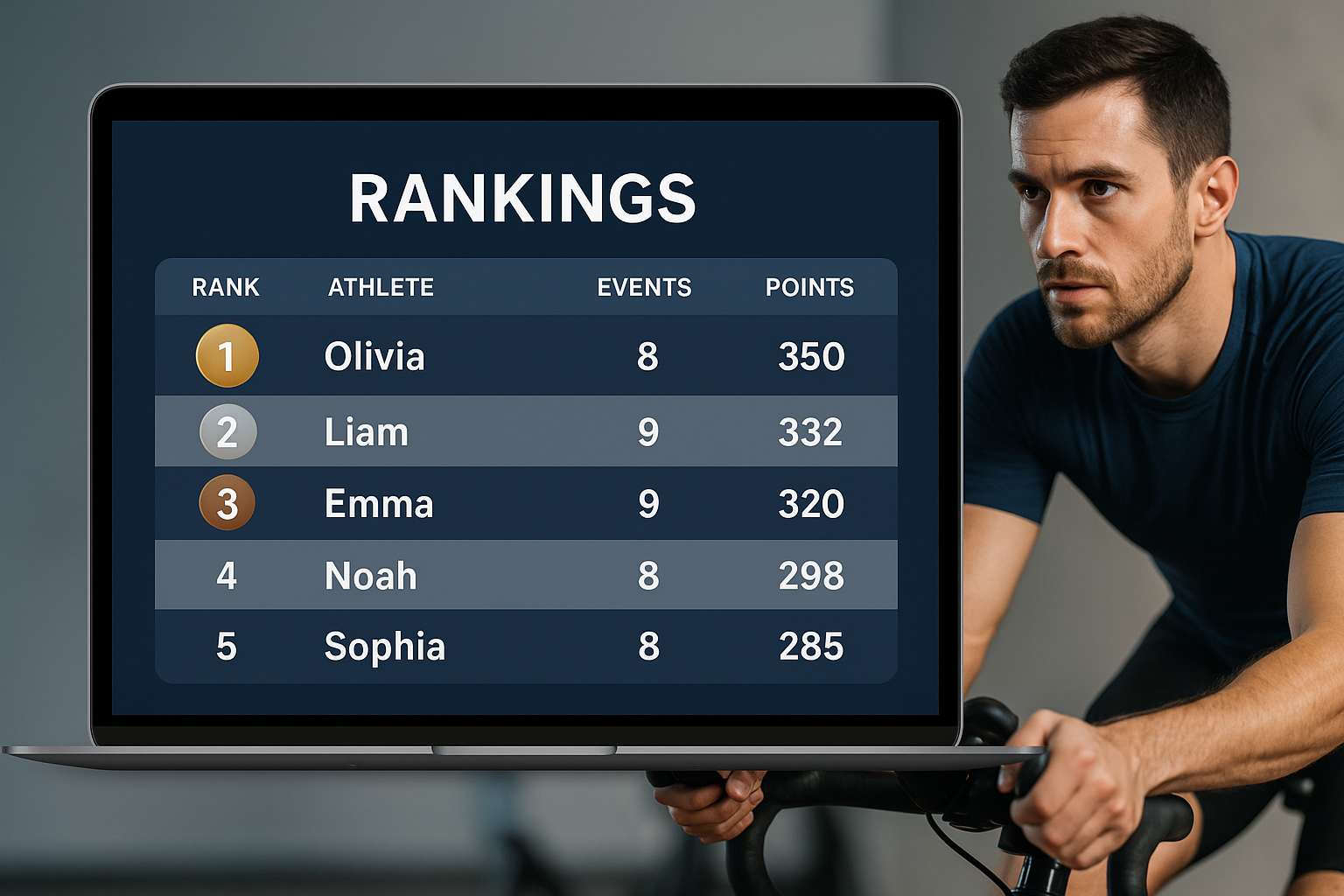
Competitive Ranking System for Seasonal Indoor Cycling Events
Architected and contributed to a system that collected and processed rider performance data from virtual cycling events across all race categories. The system calculated rankings based not only on current event results, but also on each athlete’s performance trajectory—rewarding improvement and consistency over time. Rankings were maintained across an entire season and used to determine cumulative standings and season champions. Built with TypeScript and Angular for the frontend, and MongoDB as the data store for tracking event data, rankings, and athlete progression.

Enterprise Financial and Operations Platform for Multi-Sector Service Provider
Led the architecture and implementation of a highly scalable, distributed enterprise financial and operations platform for a Global 100 hospitality and facilities management provider. The system handled millions of transactions daily with 99.99% uptime and supported critical workflows including finance, inventory, budgeting, cash management, inter-site transfers, and weekly/quarterly closings. The platform integrated with SAP to exchange financial data and enabled site-level personnel to enter and process operational records such as invoices. Optimized system performance and infrastructure, improving response times by 40%. Also developed automated testing tools using Java reflection to ensure repeatable, data-driven test environments. The platform was later named one of the company’s three strategic applications by the CEO.
2000s
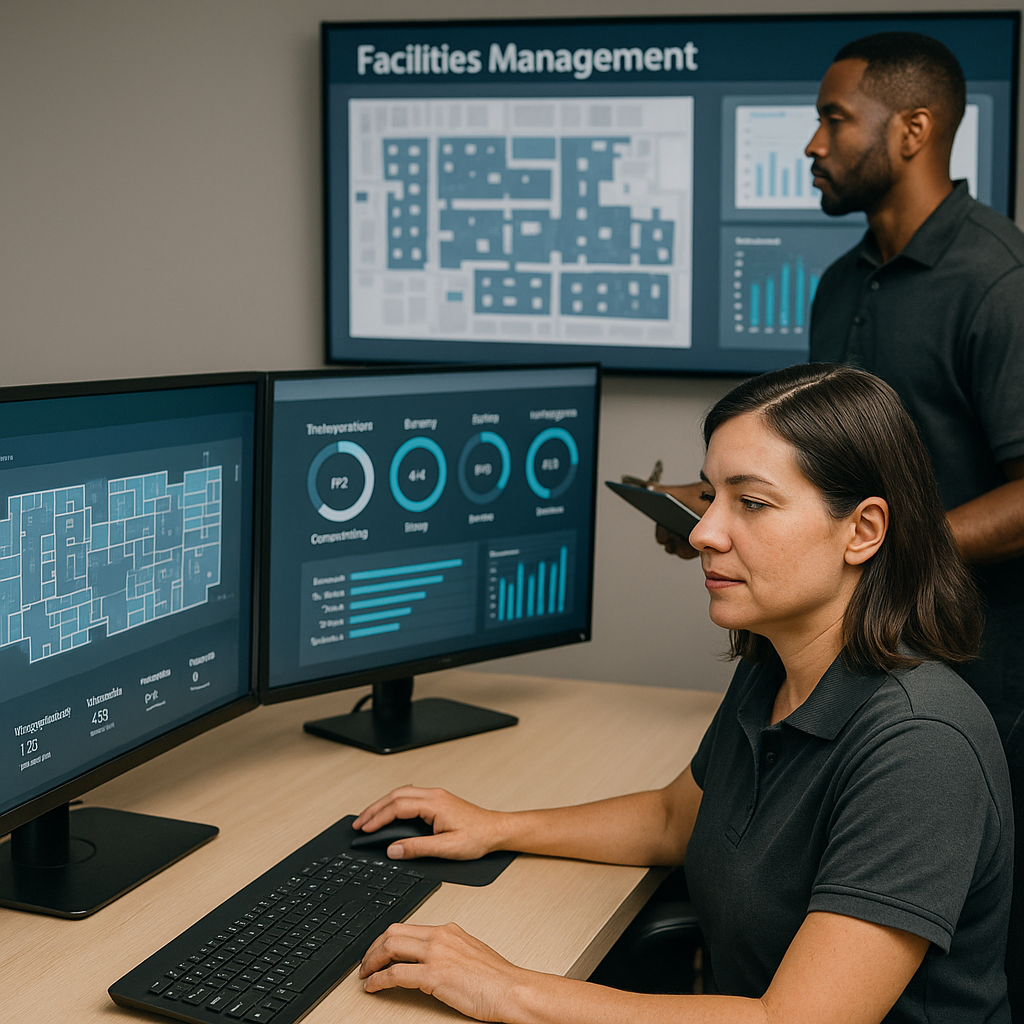
Enterprise Facilities Management Platform for Healthcare Operations
Architected a comprehensive Java-based enterprise application suite designed to streamline and integrate core operational domains for a national healthcare support services provider. The platform encompassed modules for financial management, inventory tracking, budgeting, transportation logistics, facilities oversight, and environmental compliance. Engineered to support multi-site deployment, the system facilitated centralized oversight and operational efficiency across diverse healthcare facilities, including hospitals and ambulatory centers. The solution emphasized scalability, regulatory compliance, and real-time data access, aligning with the provider's commitment to delivering high-quality support services in the healthcare sector.

Confidential, Goal-Oriented Mentoring Program for Professional Development
Designed and implemented a formal mentoring program focused on personal and career development within the organization. The program emphasized confidentiality, clearly defined objectives, and structured feedback mechanisms. Participation was guided by role clarity, with temporary deviations allowed for personal reasons. Mentors were explicitly restricted from being in the mentee’s management chain to preserve objectivity and trust. Mentor-mentee pairings were made directly based on each mentee’s selected career path and developmental goals. After each session, both participants completed surveys to provide structured feedback. Limits were enforced on the number of mentees per mentor, and mentors were reviewed quarterly using a standardized rubric to ensure accountability and ongoing effectiveness.

Web-Based Project and Feature Tracking System for Remote Development Teams
Architected and implemented a custom web-based system to manage distributed development teams, feature delivery, and milestone tracking. The platform allowed product leads to define high-level features, which developers could break down into discrete tasks. Features were tracked through development, testing, and deployment phases. Leveraging historical performance data, the system accurately forecasted feature and milestone completion dates, enabling proactive planning and resource allocation. Customers were also given access to reprioritize features within milestones, allowing them to control delivery timelines and scope in real time.
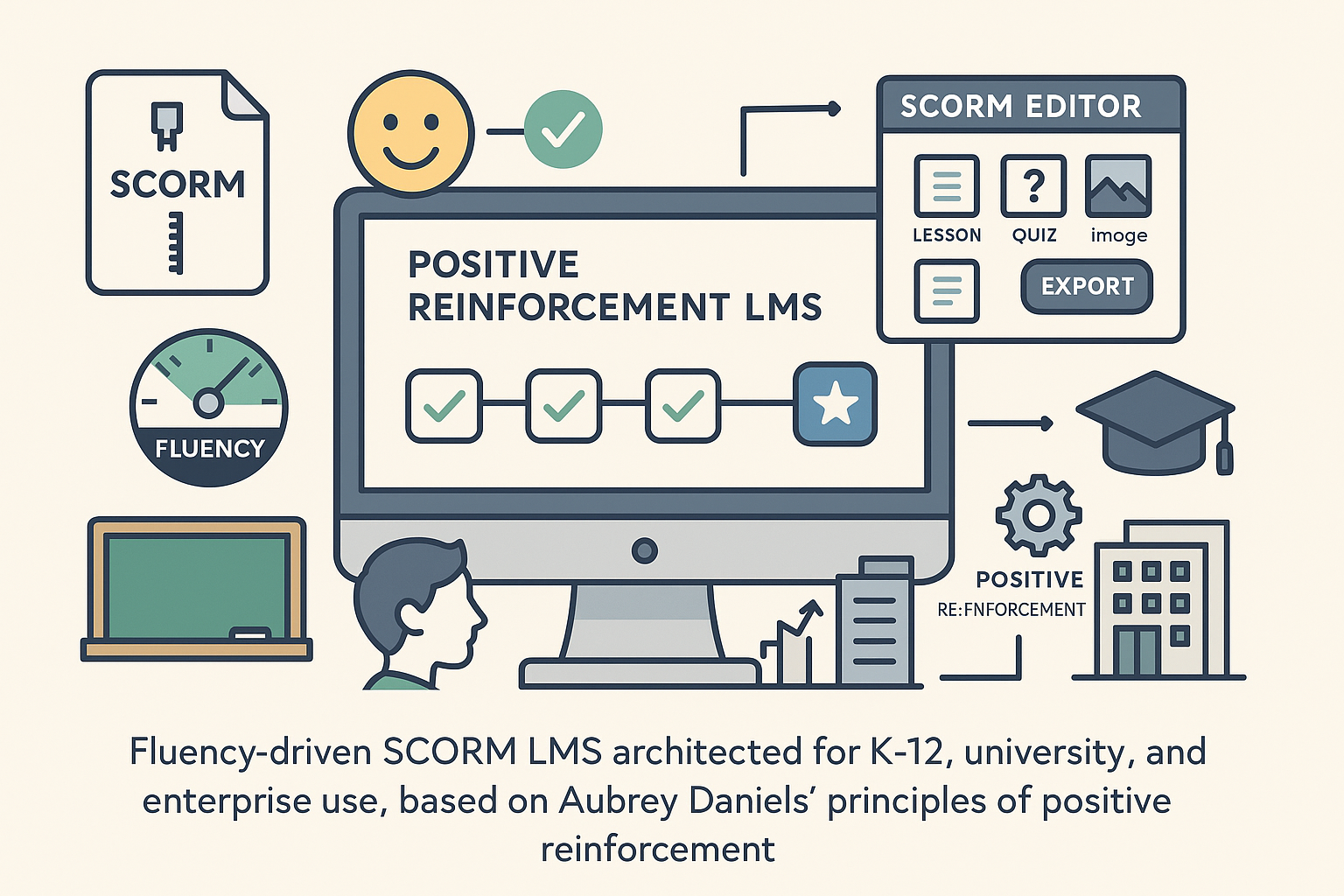
SCORM-Compliant Learning Management System Focused on Fluency and Positive Reinforcement
Architected and developed a web-based Learning Management System (LMS) grounded in the principles of positive reinforcement outlined by Aubrey Daniels. Designed to promote fluency over rote progression, the system used real-time feedback, reinforcement schedules, and performance-based gating to drive measurable learning outcomes. Included a built-in SCORM-compliant content editor enabling instructors and instructional designers to author and package interactive training modules. Deployed across multiple K–12 and university-level tutoring programs, and used internally for employee training. Also adopted by a major global energy firm’s exploratory division as part of their learning and development initiatives. Built and maintained a SCORM runtime environment, timeline-based progression engine, and analytics backend for tracking fluency-based mastery and behavioral outcomes.

Enterprise-Grade Web-Based Data Collection Platform for Clinical Quality Assurance
Architected an enterprise-grade web application platform using Java to support rapid, interactive data entry for hospital quality assurance workflows. Developed a mnemonic-based domain-specific language to declaratively define UI controls and behavior, streamlining the creation of dynamic web interfaces. The system featured a high-performance native Windows Java server and a lightweight Java applet client that eliminated page reloads, achieving 40% faster interaction compared to conventional HTML-based systems of the time. Designed for reliability and real-time data acquisition in clinical environments.
1990s
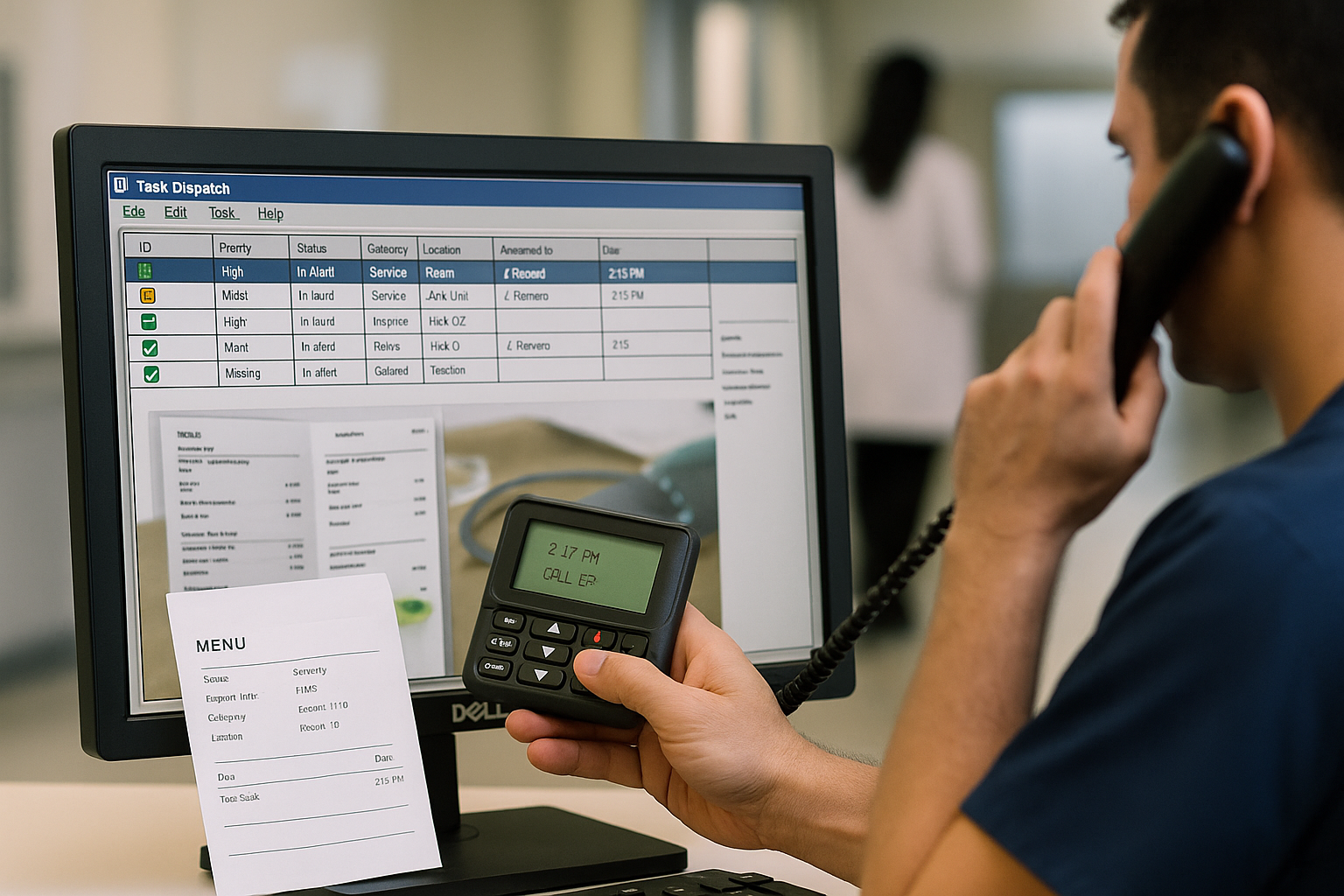
Enterprise Task and Dispatch Management System for Hospital Operations
Developed key components of a nationwide enterprise application used in hospitals to manage facility, environmental, and transportation services. The system included predictive and personnel scheduling, dispatching, and real-time task coordination. Built in Visual Basic with an SQL Server backend and extended via a high-performance C++ transaction engine featuring proprietary data storage and custom indexing. Developed a modular communications subsystem in C++ that interfaced with multiple paging systems via pluggable DLLs and controlled Dialogic phone boards to allow staff to call in updates or receive assignments. Designed a unified interface standard that enabled integration with hospital mainframes and various HL7 or proprietary data formats, ensuring each deployment could accommodate site-specific workflows.

Enhanced Menu System with Paper-Based Workflow and Optical Scanning
Extended the mobile menu ordering system to support printed menus with checkboxes, enabling patients or staff to mark selections manually. Integrated high-speed optical scanners and automated data extraction to digitize selections and load them into the database, improving accessibility and operational efficiency without sacrificing accuracy or dietary compliance.
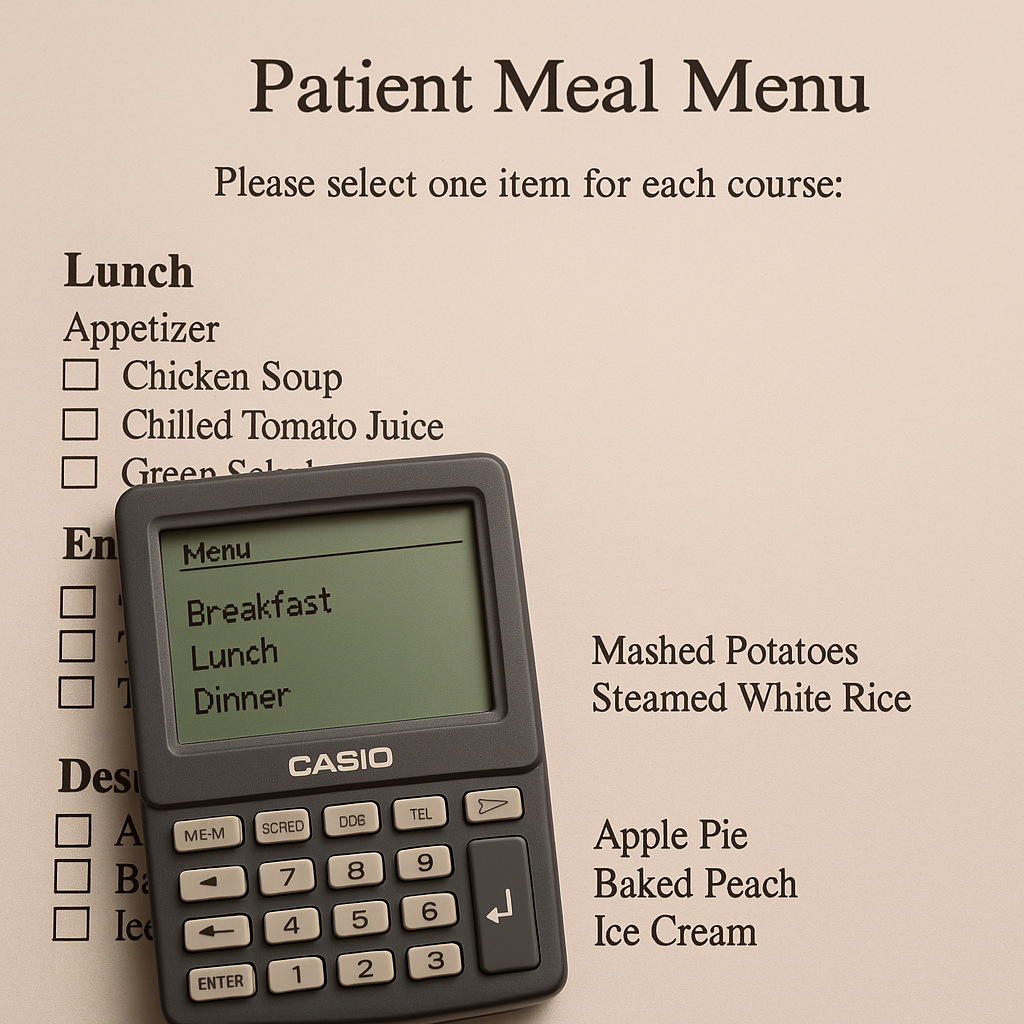
Mobile Patient Menu Ordering and Dietary Compliance System
Designed and developed a mobile application for hospital staff to collect patient meal selections at bedside using Casio PDAs. The system dynamically filtered menu options based on individual dietary restrictions, including diabetic exchange rules, ensuring compliance and improving patient experience. Implemented a custom high-performance embedded database with indexed search for rapid data access, along with a robust bi-directional synchronization mechanism between handheld devices and the hospital’s central database.

High-Speed Mail Processing Machine Control Software
Collaborated with a multidisciplinary team of electrical and mechanical engineers to develop software for high-speed mail sorting and processing machines deployed in domestic and international markets. Designed and implemented the machine control component, which dynamically optimized processing speed based on real-time conditions to maximize throughput and system efficiency. Ensured precise coordination of mechanical subsystems for reliable, high-volume mail handling.

Fuel Pump Control and POS Payment Systems for Retail Gas Stations
Worked on integrated point-of-sale and control systems for retail gas stations, supporting real-time pump authorization, transaction capture, and shift closures. Implemented pre- and post-payment authorization workflows and maintained communication with leased-line networks to process credit card transactions through providers like JC Penney and Texaco, prior to the availability of modern payment gateways. Also contributed to a companion system that enabled station operators to place fuel orders directly with local depots, streamlining logistics and supply chain coordination.